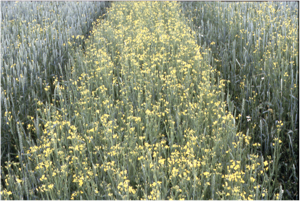
This is an article by my biologist friend César Marín for science themed magazine Órbitas Científicas:
Charles Darwin‘s empirical work has two phases: five years aboard HMS Beagle, and then several decades of observation and research with wild and domestic species. In fact, his meticulous notes of artificial selection processes led to hone his postulates. Artificial selection exists since agriculture, and is a fast, dynamic and vivid process of evolution. Domestication and interbreeding between maize and teosinte are good examples of this. Crops have a constant human selection force, but, just as with humans, this doesn’t mean that natural selection is not acting. Likewise, crops and agricultural systems are indeed populations and their ecological parameters shouldn’t be ignored. That ecological and evolutionary view of productive systems has been called Evolutionary Agroecology, and is strongly developed by an international research group of the same name, led by Copenhagen University professor Jacob Weiner.
Usually, seed selection and sown methods are based on an individual view of the plant. But farmers are interested in the whole population reproductive success. Therefore, it is necessary to introduce a polemic topic in current evolutionary biology: group selection (David Sloan Wilson, Binghmaton University). Without discussing the broad controversy, it is clear that a crop needs to be thought of as a group: some ecological conditions favor productivity. This has been proved with two cereals, wheat and maize, in which high density and spatial uniformity in some varieties, have increased yields up even to 70%, compared to medium density and rows sowing system (the usual sown method). Further, cereal group selection led more altruistic varieties to suppress weed competition up to 90%, reducing herbicides application (C. Marín and J. Weiner, Copenhagen University).
Varieties with better responses in high density and uniformity conditions, don’t have such responses in low densities. Then, group selection depends on ecological variables as competence intensity, nutrients availability, spatial arrangement, density and others, just as has been suggested for natural populations (K. Donohue, Harvard University). A significant step in this research, which is now more than a decade old, is to identify the crucial phenotypic traits that allow group selection in plants. In maize under weed competition stress, the angle of insertion of the first leave is such a trait, since when his phenotypic plasticity has been reduced, it strongly shades weeds and no other maize plants. There are several group selection reports both in nature and in lab (C. Goodnight, Vermont University), and the idea of introducing this concept in agriculture is not recent (B. Griffing, 1977), and seems to render hopeful results to increase crops productivity and sustainability.
